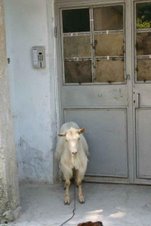Roman Britain
In the summer of the Roman year 699, now described as the year 55BC, the Proconsul of Gaul, Gaius Julius Caesar, turned his gaze upon Britain. He knew it was inhabited by the same type of tribesmen who confronted the Roman army in Germany, Gaul and Spain.
On 26 August, 55 BC the great Roman general invaded Britain for the first time. This was to be the first military conquest of the British Isles. His army set sail from Gaul and landed somewhere near Dover. The highly efficient Roman troops had little difficulty in routing the local Celtic chieftains. Caesar decided to return the following year considering this first expedition as a preliminary to the conquest. On 6 July 54 BC, legionaries and cavalry set sail to Britain in 800 boats. Caesar conquered the south-eastern part – the most accessible and the richest - of the island but the coming of winter forced him to return to Rome. He had now the knowledge that Britain was far from being the primitive island of brutal tribesmen which Romans had previously imagined it to be.
In 43AD, emperor Claudius decides to incorporate Britain into the Roman Empire. So began what was called the “ Roman occupation “ which was to last for 360 years.
The superior Roman civilization imposed its values over the Celtic society. This material culture was strongest in the towns. The ruins of the Roman cities and villas which we can still visit today are remarkable. Having imposed a uniform set of principles in architecture all over the Empire, whether we talk about Africa, the Middle East or Europe, the new comers brought their sense for order and symmetry. Towns were planned in chessboard squares for communities dwelling under orderly government. The building rose in accordance with the pattern standardized throughout the Roman Empire. The urban areas had their forum, temples, and courts of justice, baths, markets and main drains. During the first century of occupation the builders took in consideration an increasing population. Nowadays the experts dispute the population of Roman Britain, and rivals estimates vary between 500,000 and 1.5 million. It seems certain that the army, the civil administration, the townsfolk, the high class and their dependants amounted to 300.000 or 400,000 people.
London, the Roman Londinium, had become the center of the road system and an export market for corn and cloth. An extensive and well-planned city with mighty walls took the place of the wooden trading settlement of 61AD. At the end of the 3rd century money was coined in the London mint, and the city was the headquarters of the financial administration. In the later days of the Roman occupation it seems to have been the center of civil government, as York was of the military, although it never received the status of municipium. From the objects dug up in all the south-eastern part of Britain it has been possible to reconstruct the pleasant life then enjoyed by the well-to-do under the protection of the Roman rule. Togas, shoes and sandals of leather seem to have been worn in the Roman fashion. In cold weather, rooms were kept warm by heated flues beneath mosaic-patterned floors.
Christianity seems not to have had an important role in Roman Britain, given the fact that they worshiped many different deities. The proto-martyr St. Alban, who is said to have suffered for the faith under Diocletian, is spoken of with some uncertainty. In 313 AD emperor Constantine the Great offered the possibility to practice the Christian belief. In 314 the first British bishops are present at Arles. By the year 391, when Emperor Theodosius ordered the closure of the pagan temples, the British Church was highly organized, sending its bishops and delegates to the great councils held on the continent. The British – actually Romano-Briton - Church was still not strong enough to be an influential institution in the political game. The Anglo-Saxon later gave it a status of high importance but the Normans took it to the highest point of development in the early Middle Ages, reshaping it as an efficient instrument of submission of the natives
For over 300 years Britain remained a relatively untroubled outpost of the Roman Empire, the barbarians, from beyond the frontiers being kept at bay by forts and legions along coasts and in the north by Hadrian’s Wall. Stretching 73 miles from the Tyne to Solway, it remains the most impressive surviving Roman landmark in the country.
Roman soldiers looked very different from the Celts they defeated. They wore metal helmets and articulated plate armour and carried shields with a sword suspended and dagger suspended from a belt. A high degree of fitness was demanded so that a legionary could leap fully armed on a horse or swim with all his equipment across a river. The legions were dotted across Britain and were established in forts sited to achieve maximum strategic defence. In some instances the pattern of fort-building will be followed by the Normans who also took great advantage of the old Roman roads, sometimes still in use.
There was law, order and peace and a long established custom of life during the Roman occupation. The population was free from barbarism without being sunk in sloth or luxury. The culture was just a pale reflection of the metropolis. Latin was the official language and it seems that some Latin words entered the common use of Celtic population. French, imposed as an official language by the Normans, influenced much more the existing Old English idioms. Later, historians of art and architecture have attempted to describe the Romano-Celtic culture but have generally concluded with a note of the fortunate blend that was achieved in late 7th and early 8th century. Latin had an interesting fate as it became the language of culture and of scholars in monasteries during the Middle Ages especially in Ireland, from where some monks reintroduced it in Europe. As A Maurois2 said, the language spoken in England was little influenced by the Roman rule. The Latin words in English were borrowed later from French, mainly through the Normans, or were used out of scientific needs. Among the words directly inherited from Latin we can mention: street (strata via – Stratford ), mile ( Lat. mila ), wall ( Lat. vallum ), or –chester ( Lat. castra )
By the year 400 AD, at latest, the Wall seems to have been abandoned. By now the Empire itself was beginning to crumble into ruins, and in Britain one legion after another was recalled to fight Rome’s wars on the Continent. In 407 AD the last two remaining legions were withdrew on the orders of Emperor Honorius, not to return. Until by the middle of the 5th century Rome’s protection was at an end. The islanders were left to fend for themselves.
What was the important effect of the Roman occupation on the later kingdom of England? Besides the city of London and a few ruins, the Romans left no direct significant traces on culture, arts or social life. The Romanic elements in language and in the material civilization were brought back to the island by with the coming of the Normans. The irony of history lies in the fact that the descendants of the very people who contributed to the fall of the Emperial Rome and to the withdrawal from Britain, would bring back – after more than six centuries – the seeds of the new Romanic spirit which emerged in Europe.







No comments:
Post a Comment